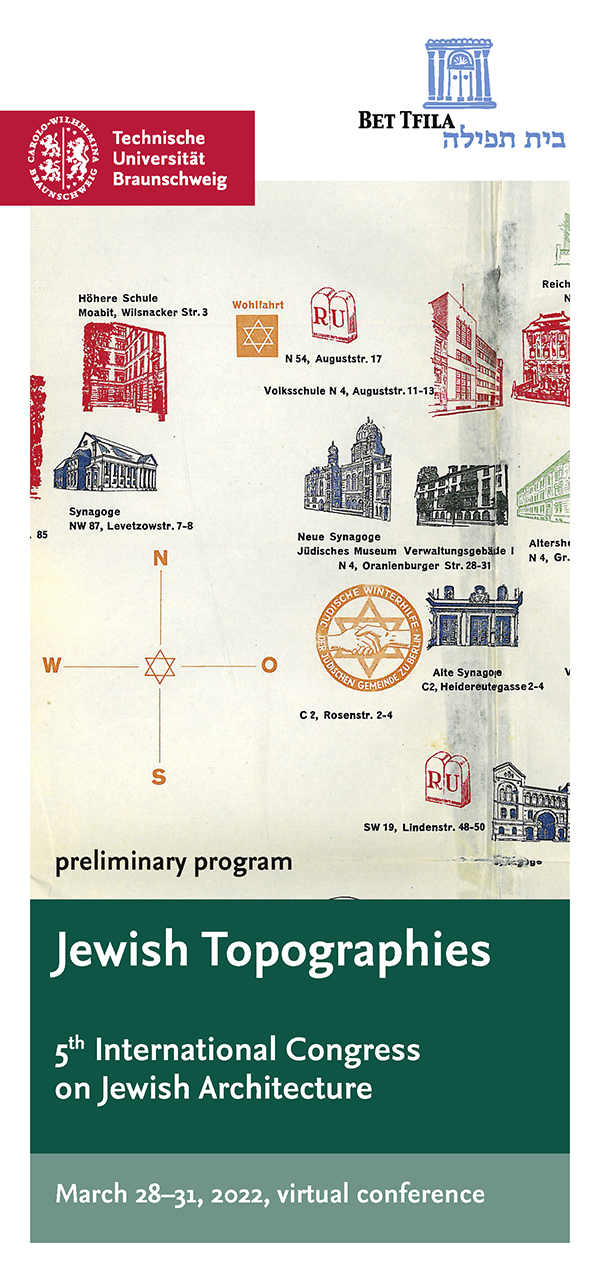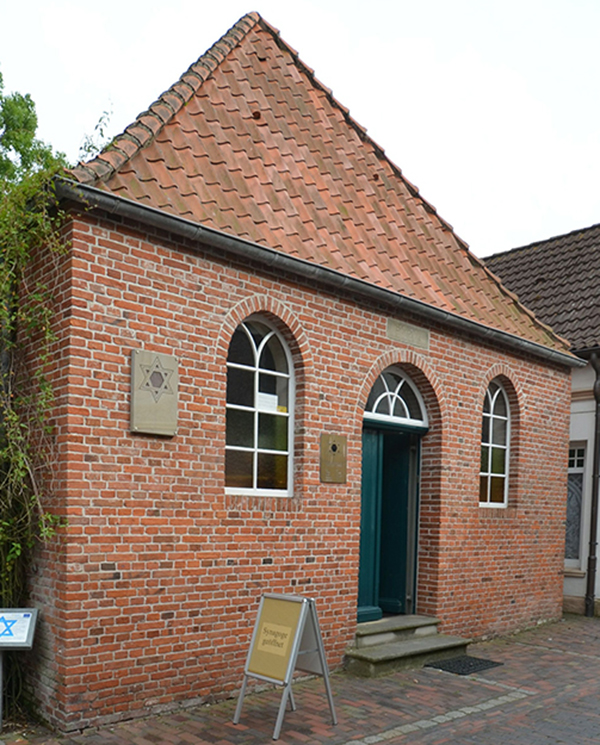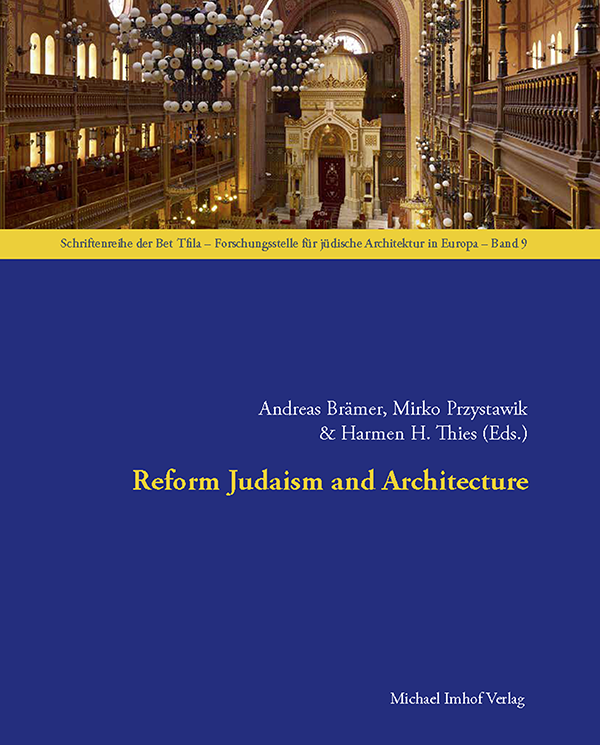Jewish Topographies
5th International Conference on Jewish Architecture
 Jewish residential areas and settlements, facilities of Jewish communities (such as synagogues, cemeteries, schools, or hospitals), or locations of companies and shops can form significant topographical networks in cities and landscapes. These “Jewish Topographies” stand in a spatial and social context with corresponding places of the non-Jewish population, in which different cultural, religious or ethnic groups find their own spaces. Conflicts and cooperations, exclusions and limitations emerge in the spatial relationships between these locations and their respective urban and architectural design reflect the possibilities and expectations of the respective and related groups.
Jewish residential areas and settlements, facilities of Jewish communities (such as synagogues, cemeteries, schools, or hospitals), or locations of companies and shops can form significant topographical networks in cities and landscapes. These “Jewish Topographies” stand in a spatial and social context with corresponding places of the non-Jewish population, in which different cultural, religious or ethnic groups find their own spaces. Conflicts and cooperations, exclusions and limitations emerge in the spatial relationships between these locations and their respective urban and architectural design reflect the possibilities and expectations of the respective and related groups.
The conference aims at examining different levels of “Jewish Topographies”: the spectrum of contributions ranges from macro studies to cross-region networks of Jewish communities or Jewish institutions and people (e. g., commercial networks), to locations and facilities of the individual communities (e. g., Judengassen ( Jews’ Lanes), eruvim, DP-Camps), to micro studies of residential areas or individual facilities and buildings. Topographies of forced housing (such as ghettoes, concentration camps, and Judenhäuser (Jewish houses)) will also be discussed.
The conference offers different methodologic approaches to the subject, such as religious and profane places and objects, synchronous and diachronic perspectives. The focus of the conference is on developments after the Middle Ages. It also asks for symbolic, religious, and literary topographies and for ideas on how Jewish topographies can be appropriately researched, represented and later conveyed.


